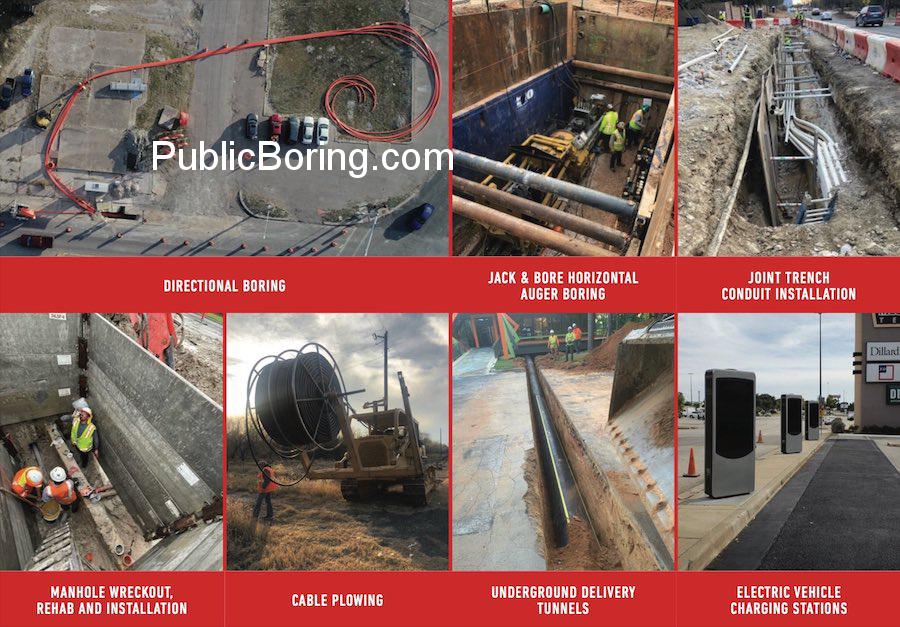Underground Utility Contractors: An In-depth Overview of Services and Processes
Underground utility contractors specialize in laying and maintaining utility infrastructure beneath the ground, ensuring the efficient delivery of various services to cities and communities. Here’s a comprehensive look at the steps and services provided by these contractors using the provided terms:
- Engagement & Assessment:
- Selection of Experts: When seeking the best underground utility contractors, individuals and corporations often turn to local companies or larger corp. and LLC entities known for their expertise.
- Feasibility Study: Before embarking on a project, contractors assess whether the ground is boreable, especially in hard rock terrains.
- Initial Preparations:
-
- Construction Site Development: Proper development and planning of the construction site are vital to ensure safety and efficiency.
- Government & Regulatory Approvals: Particularly when working near highways, railroads, or military zones, contractors must secure necessary permissions.
- Utility Installation Procedures:
-
- Trenching and Hand Trenching: These conventional methods involve digging trenches to lay utilities. Hand trenching may be used for smaller projects or intricate areas.
- Trenchless Techniques: Including methods such as horizontal boring and jack and bore, these minimize surface disruption, especially in busy urban areas.
- Cable Plowing: A method where a cable plow is used to create a narrow trench and lay cables simultaneously, ideal for OSP (Outside Plant) services like telecommunications.
- Ductbank Installation: Contractors install ductbanks to house and protect multiple utility lines, be it electrical, fiber, or others. This work ensures the organized placement of utilities.
- Utility Integration:
-
- Conduit and Manhole Installations: Conduits house cables and other utilities, while manholes facilitate access for maintenance. Contractors address manhole wreckout and undertake installation, rehabilitation, and strategic placement.
- Specialized Utilities: This includes electric vehicle charging stations, FTTH (Fiber to the Home) services, and infrastructure for smart cities.
- Joint Trenching: When space optimization is essential, contractors use joint trenches to lay multiple utilities together.
- Emergency and Contingency Protocols:
-
- Water Management: In wet conditions or when encountering unexpected water, contractors handle slurry and water ingress to maintain safety and project integrity.
- Rescue & Emergency Protocols: Given the risks of underground work, contractors always have emergency and rescue protocols in place, especially when working near busy roads.
- Collaborations & Subcontracting:
-
- Collaborative Engagements: Often, underground utility contractors work in co-op arrangements or collaborate with subcontractors who have specialized expertise, such as fiber boring or EV charger installations.
- Finalizing and Restoration:
-
- Landscape Restoration: After underground work, contractors restore the surface, ensuring minimal environmental and aesthetic impact.
- Testing and Activation: Once utilities are laid, testing is vital before their activation to ensure functionality and safety.
- Ongoing Maintenance & Upgrades:
-
- Regular Maintenance: Underground utility contractors often offer ongoing maintenance services to ensure the longevity and efficiency of the installed infrastructure.
- Upgrades & Expansions: As cities evolve, there’s a need for upgrades, be it for smart cities’ infrastructure, expanding FTTCs (Fiber to the Curb), or introducing new utilities like solar farms.
In essence, underground utility contractors play a pivotal role in modern infrastructure development, ensuring that essential services are delivered seamlessly beneath our feet. Their expertise spans from traditional methods to cutting-edge techniques, all aimed at providing robust, efficient, and safe utility solutions.


